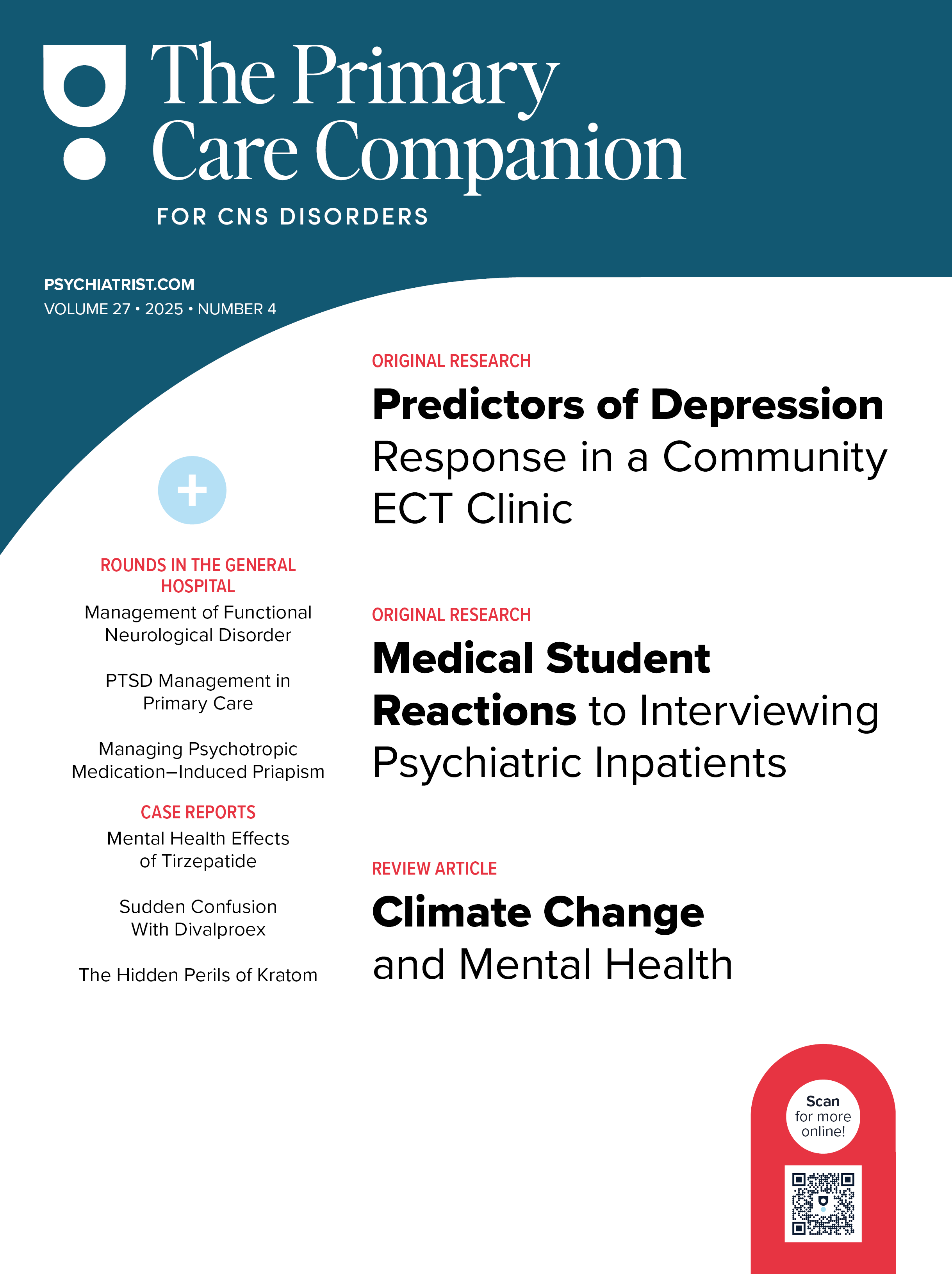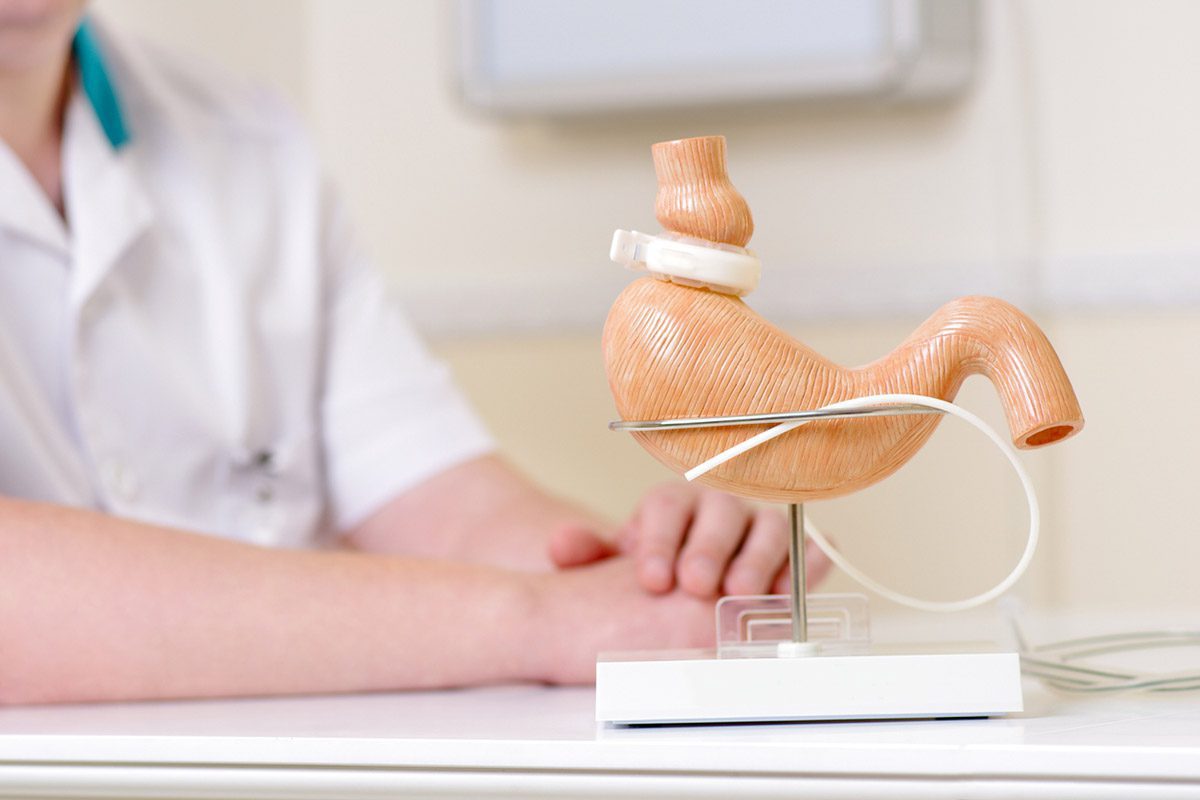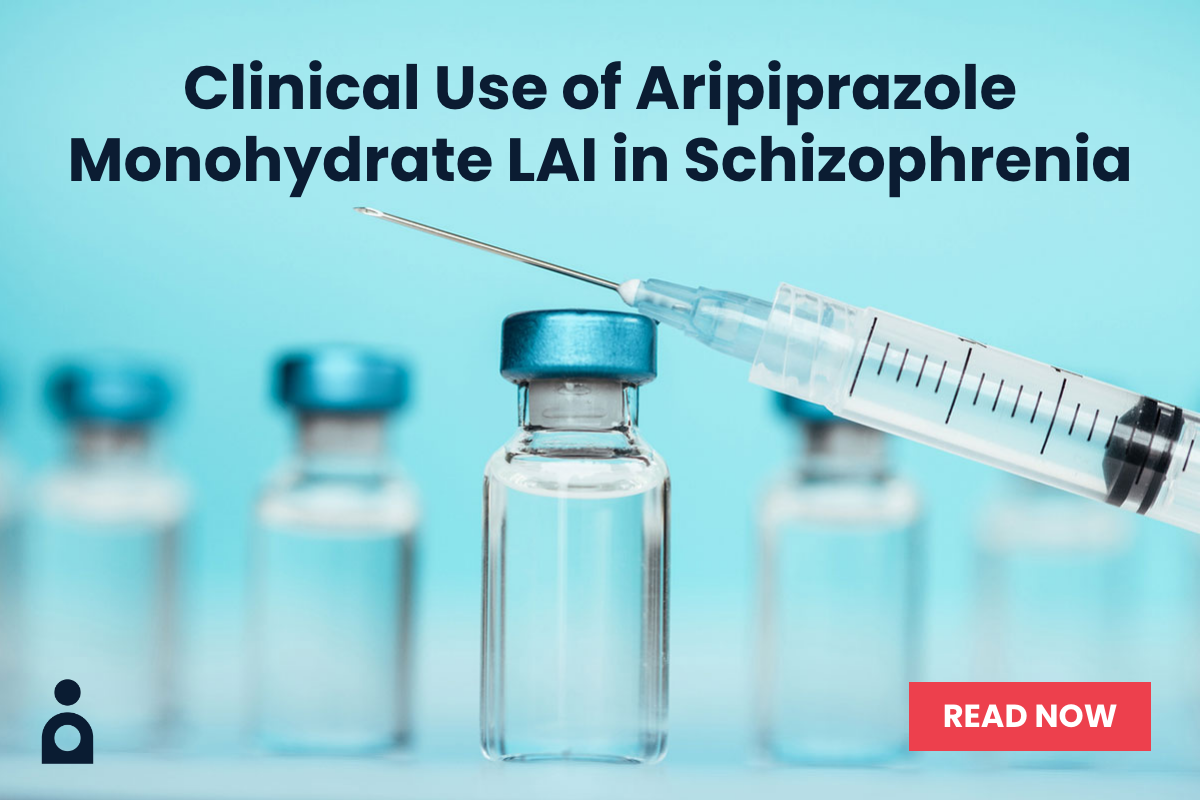Effectiveness and Safety of Intravenous Ketamine for Severely Depressed Patients Unable to Receive Electroconvulsive Therapy Due to Medical Risks
To the Editor: Electroconvulsive therapy (ECT) continues to be the definitive treatment for severe depression or suicidality. However, ECT can result in serious complications such as arrhythmia or intracranial insults, especially among those already at risk.1 When ECT is deferred due to medical risk, patients often face prolonged hospitalizations and poor quality of life due to lack of a timely, effective, and safe alternative antidepressant treatment. Research2 suggests that intravenous ketamine may offer a comparable response with improved tolerability. As part of a tertiary teaching hospital including inpatient psychiatry, we offered ketamine to depressed patients unable to receive ECT and found rapid, improved clinical outcomes in this small, definable patient population.
Methods. Over a 6-year period, 10 hospitalized patients (5 women, aged 47 to 84 years, mean = 63 years) received ketamine for depression. All met depression criteria for ECT, scored as moderate or severe depression per the Montgomery Asberg Depression Rating Scale (MADRS),3 but could not start or had the ECT stopped due to serious medical risks or complications, as determined from a multidisciplinary discussion including psychiatry, anesthesiology, and internal medicine. Reasons for ECT deferral included mass-inducing glioma on the left ventral ventricle, brain aneurysm clippings with recurrent seizure, aggressive anticoagulation therapy for aortic valve repair, poor respiratory function from tuberculosis-related pulmonary fibrosis, and difficult-to-manage hyperkalemia in a hemodialysis patient. ECT complications leading to treatment termination were chronic premature ventricular contractions that worsened during ECT, Takotsubo cardiomyopathy, left bundle branch block, progressively lengthening post-ECT delirium, and no spontaneous breathing post-ECT requiring resuscitation.
After securing consent, intravenous ketamine was delivered at 0.5 mg/kg (adjusted to 0.4 mg for 1 obese patient) over 40 minutes. Treatment was repeated until significant clinical improvement (considered dischargeable from acute inpatient psychiatry service) or 3 treatments were reached (at least 2 days apart within a 2-week period). MADRS scores before ketamine and within 3 days after the last ketamine infusion were obtained. Patients continued to receive treatment for their medical conditions as usual. They also underwent concomitant change in their antidepressant regimen (including 1 with bipolar depression who received quetiapine).
Results. All patients experienced resolution of suicidality and a decrease in their MADRAS score (pre-ketamine mean = 39, SD = 8.4; post-ketamine mean = 17, SD = 7.6, t8 = 7.2, P < .01; 1 patient was excluded from the analysis due to no post-ketamine score). Six patients showed a 50% or greater MADRS reduction. Number of treatments were 1 in 6 patients, 2 in 1 patient, and 3 in 3 patients (mean = 1.7 treatment). There were no adverse events leading to ketamine termination or worsening of their existing medical conditions. Four patients reported tolerable nausea and vertigo. The only intervention needed was intravenous antihypertensive, which resolved elevated blood pressure during ketamine infusion.
Despite initial promising results, the use of ketamine and its derivative esketamine in depression still warrants caution before widespread use.4 Nevertheless, for our depressed patients unable to receive ECT due to medical risks, ketamine averted a lengthy treatment course characterized by persistence of severe depressive symptoms. It is possible that these patients may still attempt to undergo ECT with additional procedural modifications and precautions, but the diminishing benefit-to-risk ratio of ECT made the switch to ketamine a sounder option. Among subjects in published ketamine studies,5 our patients were among the most medically ill to have tolerated and benefited from intravenous ketamine. Such tolerability is consistent with previous evidence that ketamine at clinical doses confers minimal intracranial pressure, respiratory depression, and hemodynamic changes.6 In conclusion, larger replication studies are needed; however, our limited experience has shown that intravenous ketamine can be an effective and expedient treatment in medically complex patients suffering from high levels of depression.
References
1.Datto CJ. Side effects of electroconvulsive therapy. Depress Anxiety. 2000;12(3):130-134. PubMed CrossRef
2.Murrough JW, Iosifescu DV, Chang LC, et al. Antidepressant efficacy of ketamine in treatment-resistant major depression: a two-site randomized controlled trial. Am J Psychiatry. 2013;170(10):1134-1142. PubMed CrossRef
3.Montgomery SA, Åsberg M. A new depression scale designed to be sensitive to change. Br J Psychiatry. 1979;134(4):382-389. PubMed CrossRef
4.Sanacora G, Frye MA, McDonald W, et al; American Psychiatric Association (APA) Council of Research Task Force on Novel Biomarkers and Treatments. A consensus statement on the use of ketamine in the treatment of mood disorders. JAMA Psychiatry. 2017;74(4):399-405. PubMed CrossRef
5.Grady SE, Marsh TA, Tenhouse A, et al. Ketamine for the treatment of major depressive disorder and bipolar depression: a review of the literature. Ment Health Clin. 2017;7(1):16-23. PubMed CrossRef
6.Aroni F, Iacovidou N, Dontas I, et al. Pharmacological aspects and potential new clinical applications of ketamine: reevaluation of an old drug. J Clin Pharmacol. 2009;49(8):957-964. PubMed CrossRef
aDepartment of Psychiatry, University of Hawaii at MÄnoa, Honolulu, Hawaii
bBehavioral Health Services, Queen’s Medical Center, Honolulu, Hawaii
Published online: June 4, 2020.
Potential conflicts of interest: None.
Funding/support: None.
Acknowledgment: The authors would like to express their appreciation to the staff of the Department of Psychiatry, University of Hawaii at MÄnoa, Honolulu, Hawaii.
Prim Care Companion CNS Disord 2020;22(3):19l02535
To cite: Lu BY, Agapoff JR, Olson D, et al. Effectiveness and safety of intravenous ketamine for severely depressed patients unable to receive electroconvulsive therapy due to medical risks. Prim Care Companion CNS Disord. 2020;22(3):19l02535.
To share: https://doi.org/10.4088/PCC.19l02535
© Copyright 2020 Physicians Postgraduate Press, Inc.
Please sign in or purchase this PDF for $40.00.




